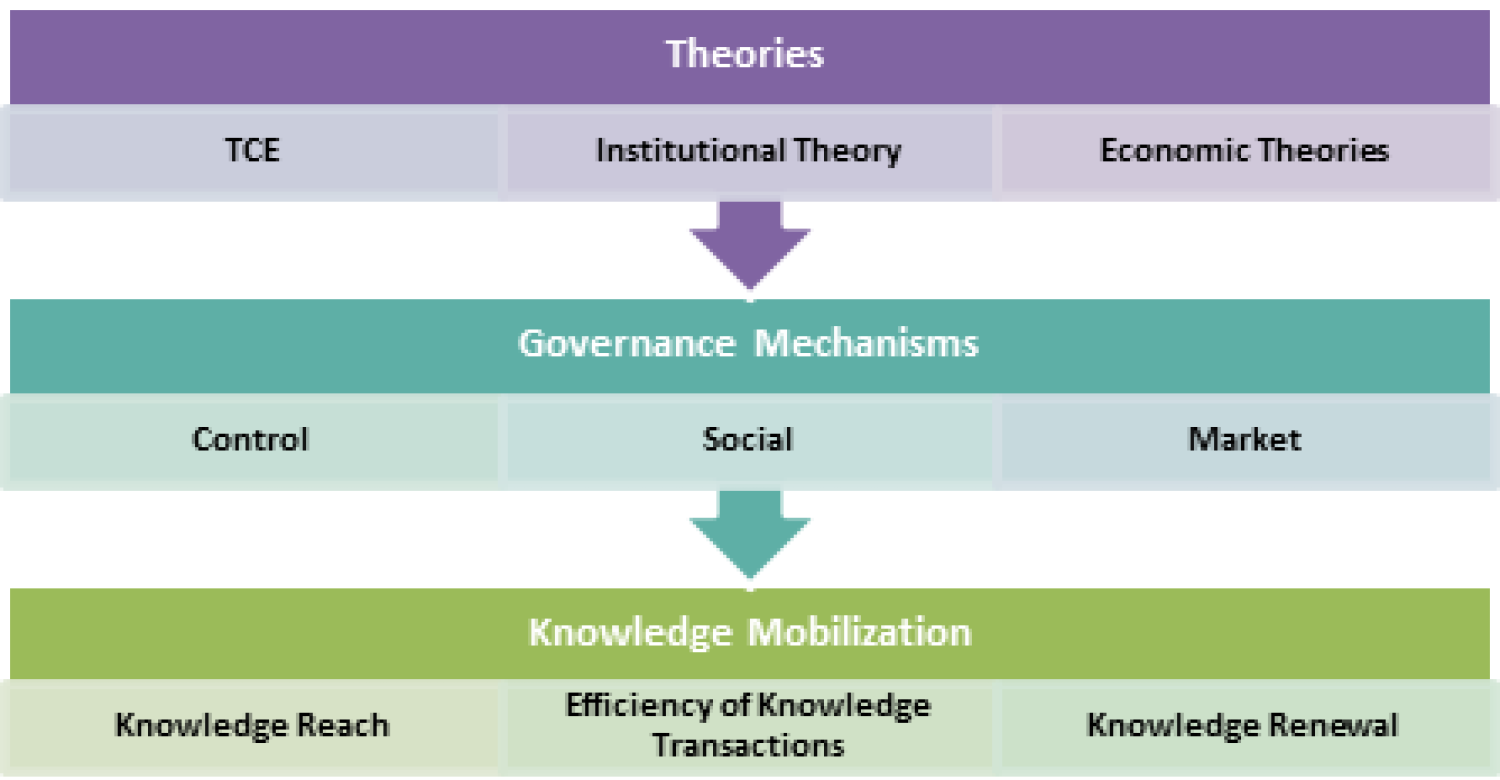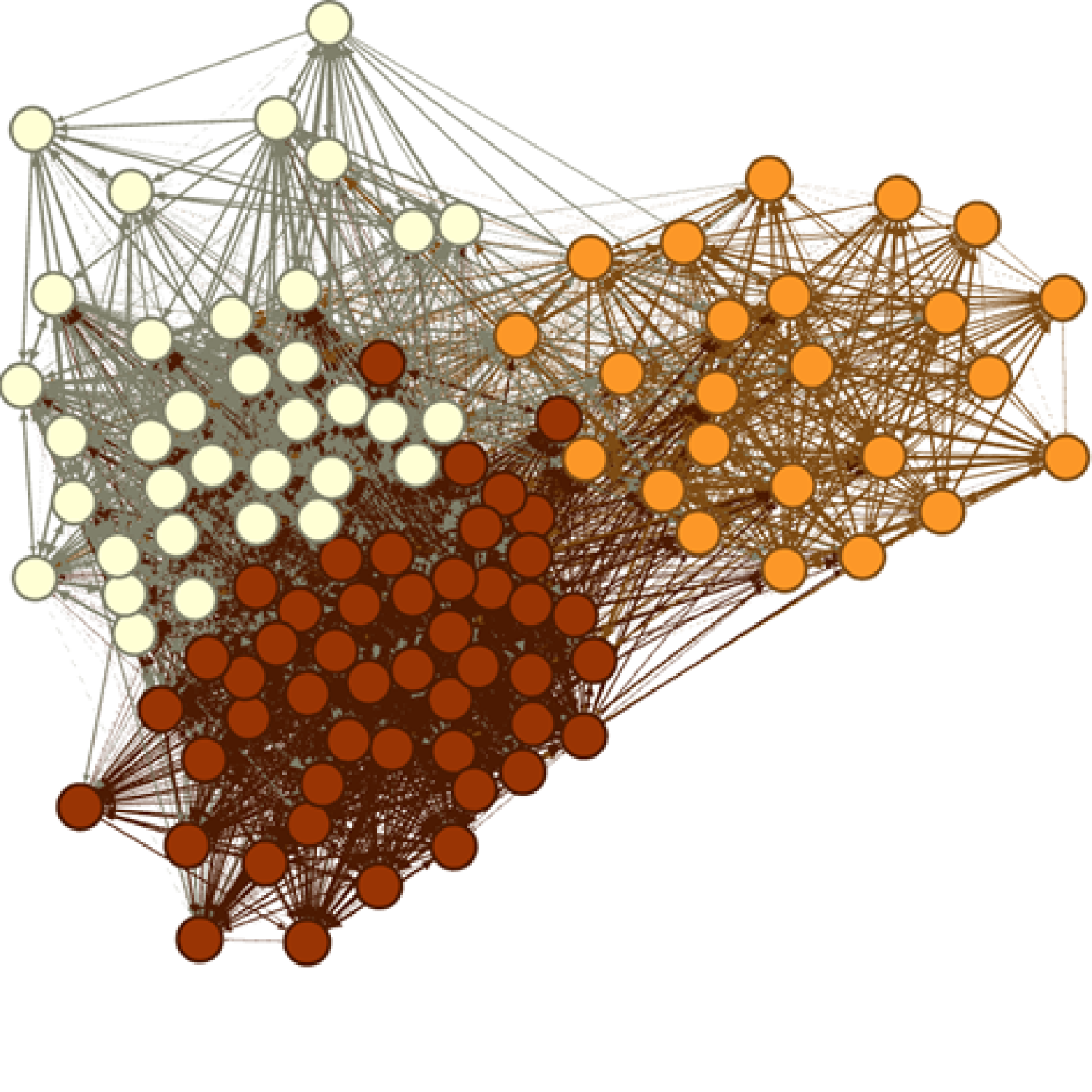Knowledge Governance and its Effects on Knowledge Mobilization
Summary
The ability of an organization to mobilize knowledge when and where it is needed is fundamental for organizational performance. When done effectively, this ability can help organizations reduce repeated mistakes, spread innovation and best practices, and avoid dedicating resources to problems that have been solved previously. To date, various organizational mechanisms to govern knowledge have been proposed and implemented, yet they have had limited and varying effects on knowledge mobilization. Thus, there is a pressing need to better understand how to govern knowledge and effect knowledge mobilization across the entire organization.
Knowledge governance is concerned with how the deployment of organizational mechanisms influences knowledge processes, i.e., the creation, retention, and sharing of knowledge. Traditionally, knowledge is governed in organizations through social and control mechanisms through the implementation of Communities of Practice (CoPs) and hierarchical reporting structures. In addition to these traditional mechanisms, this research will analyze the creation of a new form of knowledge governance - a knowledge market, where knowledge is created, priced and sold internally - within a multinational engineering organization. Thus, this research builds from institutional theory, transaction cost economics and the knowledge-based view of the firm to:
analyze the design and evolvement of an internal knowledge market
compare and contrast the governance of knowledge through internal knowledge markets and traditional Communities of Practice
analyze how different forms of governance affect knowledge mobilization
Funding
National Science Foundation (NSF) Division of Social and Economic Sciences
College of Engineering and Applied Science Dean’s Graduate Assistantship
Department of Civil, Environmental, and Architectural Engineering Doctoral Assistantship
Research Questions
How is an intra-firm knowledge market created?
How does an organization govern internal knowledge exchange?
How do different governance mechanisms affect knowledge mobilization?
Research Methods
A mixed-method analysis will be used to answer the three proposed questions. To answer “How does an organization create an internal knowledge market?” we will document and analyze the creation of a market through the triangulation of data collected from interviews, documents, and observations with managers and users of the knowledge market. To answer “How does an organization govern internal knowledge exchange?” we will collect, analyze, compare and contrast data obtained through interviews and surveys with both managers and users of CoPs and the knowledge market. We will transcribe the interviews and import these transcriptions, along with the collected documentation and observations, into NVivo. To answer “How do different governance mechanisms affect knowledge mobilization?” we will once again collect, analyze, compare and contrast data obtained through interviews and surveys with managers, contributors, and users of the two organizational forms. We will focus on the key constructs of: knowledge creation, renewal, and efficiency of knowledge transactions. We will also statistically compare the differences between the knowledge exchanged through CoPs and that exchanged though the knowledge market, along dimensions such as codifiability, complexity, and novelty. We will analyze whether the company governs knowledge exchanges in a discriminating way, where knowledge transactions, which differ in their characteristics (codifiability, complexity, etc.), are aligned with governance structures (CoPs versus internal market), which differ in their cost and benefits.

Findings
This research is expected to expand upon theories of intra-organizational knowledge governance. Specifically, by analyzing a new form of knowledge governance (i.e., internal knowledge markets), this research introduces market mechanisms into intra-organizational analysis. In addition, this research will create a theoretical framework for analyzing and comparing different forms of knowledge governance (e.g., centralized approaches vs. CoPs vs. internal knowledge markets) and determining the effects of these governance strategies on knowledge creation, renewal, reach within an organization.
Do boundary spanners of knowledge-based subgroup have increased individual performance?
The research team used data from the entire IT department at a large engineering organization to identify whether boundary spanners in knowledge networks are likely to have increased individual performance ratings. First, using a modularity optimization algorithm, we identified knowledge-based subgroups, subgroups that share more knowledge internally then externally. Second, to validate the performance benefits of sharing knowledge across these subgroups, we analyzed different types of boundary spanning roles to individual performance. Our results demonstrate that performance is enhanced for individuals that bridge knowledge-based subgroups. Specifically, different types of boundary spanners (itinerants (individuals who connect two unconnected individuals in one external subgroup), liaisons (individuals who connect two unconnected individuals from two different external subgroups) and gatekeepers (individuals who connect an external subgroup to their own subgroup)) were significant and positive to their performance ratings. These findings show the importance of sharing knowledge across structural holes for individual performance and help validate structural hole theory in engineering organizations. This paper is under review in the ASCE Journal of Management in Engineering.

Visual Representation of the Subgroups
Evaluating network ties and positions for time benefits
Social network research has shown that network ties and positions facilitate access to valuable resources. However, little is known about the type of network ties and positions of knowledge providers that save knowledge seekers the most time on their daily tasks—does information unavailable within one’s strong, local network save the most time due to its novelty? does information from individuals that are on the periphery save the most time? To address this need, this research analyzed the strength of network ties (weak or strong) and positions of the knowledge provider in the network (centrality of knowledge provider) to determine which ties and network positions saved knowledge seekers more time on their work tasks. To conduct this study, the research team used a dataset of 6,689 knowledge sharing dyads surveyed from one department in a large infrastructure engineering organization. To identify which network ties and positions facilitated the most time savings, we compared the perceived time savings that individuals gained from receiving knowledge from other members within the department. Results showed that stronger ties were assessed as more beneficial for time savings, especially when central actors within the network provided the knowledge. The paper is currently under review for the special issue of social networks in the Construction Management and Economics journal.
The importance of expertise visibility across organizational boundaries for individual performance
The importance of knowledge sharing within construction and engineering organizations is well acknowledged within the literature. A critical step to organizational knowledge sharing involves expertise visibility, or knowing who knows what, as employees must first identify who has the knowledge needed for project or organizational tasks before engaging in knowledge exchange. Thus, expertise visibility is theorized to improve group and organizational performance; however, there is a dearth of literature that has analyzed the importance of expertise visibility on employee performance. Due to the importance of employee performance for group and organizational performance, this research analyzed the relationship between expertise visibility and employee performance. Specifically, we analyzed responses to survey questionnaires to compare visibility across organizational boundaries with employee performance using social network analysis and linear regression analysis. Results showed that being visible across expertise, office, and hierarchy boundaries was associated with increased employee performance. Construction and engineering organizations can use these results to encourage employees to become more visible outside of their immediate groups in order to increase their performance.
A relational view of knowledge seeking antecedents
Organizational scholars within engineering management have increased their attention to knowledge sharing activities within construction engineering and management organizations, but have largely ignored the essential phase of seeking for knowledge. This research proposes studying the antecedents of knowledge accessibility, which is essential in the process of knowledge seeking. Our theory includes a relational view of knowledge seeking (Borgatti and Cross 2003) which states that the relationship between the seeker and provider are essential in process of knowledge seeking. Specifically, we argue that the strength of relationship in terms of interpersonal similarity (homophily) and frequency of interactions (tie strength) matters for knowledge accessibility. However, we also add interaction effects. First, it is expected that some groups will rely on interpersonal similarity more than other groups. Specifically, it is expected that the relationship will be higher for minorities (gender and race). Second, the relationship between tie strength and expertise accessibility depends on the type of knowledge that is being transferred. It is expected that accessibility of tacit knowledge will be higher for stronger ties while accessibility of codified knowledge will be higher for weaker ties. The current pilot study has been administered to 100 employees at an infrastructure engineering organization to test the proposed hypothesis. Results will be analyzed before distributing a survey to the entire organization.
Assessing expertise using Bourdieu's habitus
Organizational scholars within engineering management have increased their attention to knowledge sharing activities within construction engineering and management organizations, but have largely ignored the essential phase of searching for knowledge. This research addresses this gap by studying knowledge searching, specifically the phase that assesses expertise of peers. To do this, we analyze knowledge searching and assessing expertise as a process through the lense of practice-based theory. We employed active interviewing with twenty employees at a large infrastructure engineering company and used inductive qualitative analysis to describe how individuals’ assess expertise. We found that individuals assess expertise by navigating through their interactions with experts and listening to their peer opinions of who is an expert. In addition, knowledge searchers form an understanding of other employee’s knowledge based on how they act. As such, we found that knowledge searchers assess expertise based on one’s cultural institutional (e.g. professional licenses), social (e.g. peer opinions) and cultural embodied (e.g. use of scientific language) capital. When they do not have direct (face to face) interactions with experts, they rely on formal rules such as level of experience, to assess expertise. This paper was presented at the Engineering Project Organizations Conference in Scotland in 2015.



